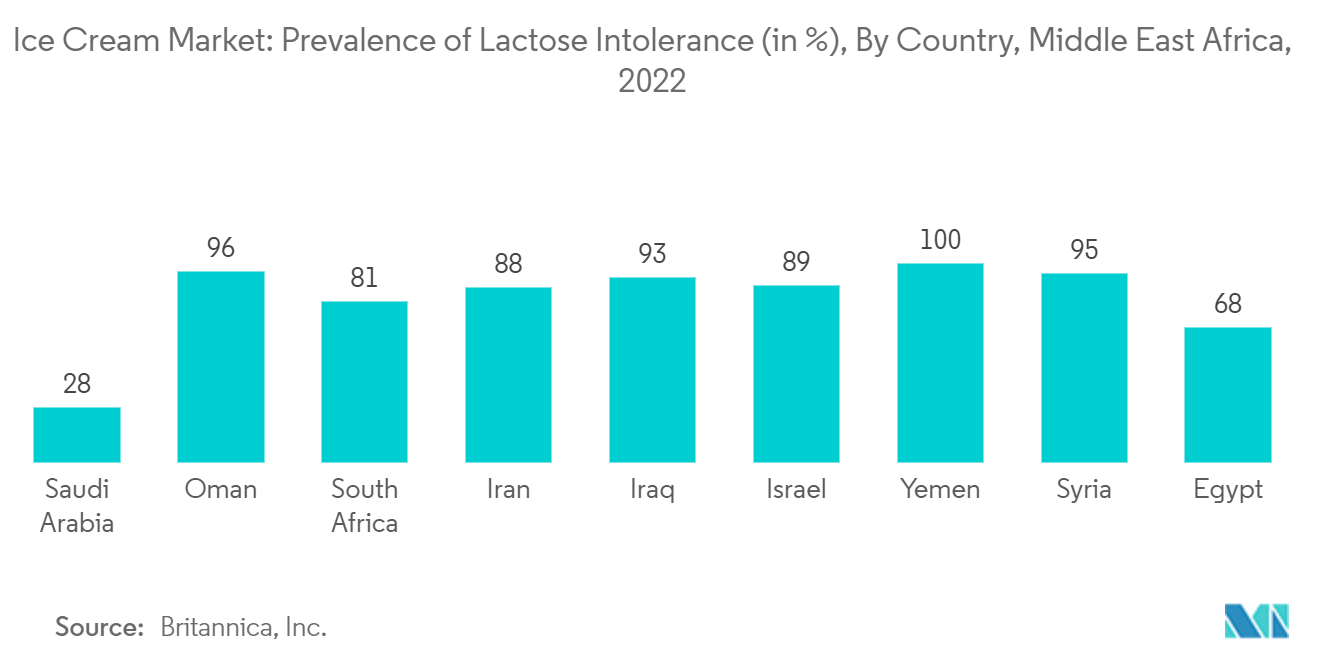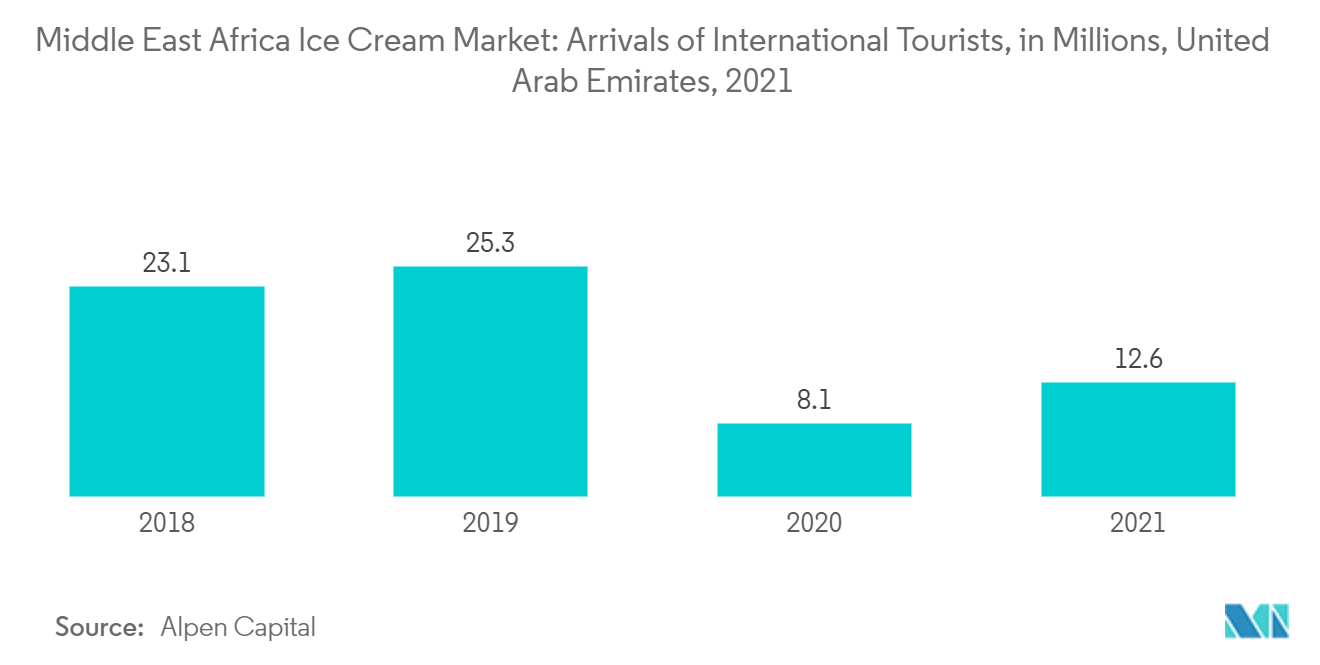Market Trends of Middle East & Africa Ice Cream Industry
Demand for Low-fat and Non-dairy Ice Cream Products
- Non-dairy ice cream products are witnessing significant growth in the market owing to the increasing vegan population. Shifting trends toward vegan lifestyles owing to increasing health consciousness and socialization trends are propelling the industry. Furthermore, rising incidences of lactose intolerance and other milk-related allergies foster product demand.
- For instance, according to Britannica ProCon.org, in Saudi Arabia, in 2022, 28% of the country's population had lactose intolerance; similarly, 81% of South Africa's population had lactose intolerance, while 73% of Morocco's Population had lactose intolerance.
- With the growing awareness of plant-based dairy-free products, consumers are willing to opt for dairy-free ice cream. This, in turn, led the key players to invest more in research and development to formulate new dairy-free frozen desserts, including ice cream.
- For instance, in March 2023, Saddle launched its new offering, matcha ice cream, in Dubai. The ice cream is vegan and dairy-free, as per the company's claim. High per capita ice cream consumption, particularly in the United Arab Emirates and Kingdom of Saudi Arabia, is boosting the product demand in the region.
- Comprehensive product variations through materials, including coconut, almond, and soy milk, will positively influence the industry's growth. Innovative flavor offerings, mainly including blended flavors, have enhanced product development. Increasing consumer spending on take-home and impulse products will further boost the non-dairy ice cream demand.

United Arab Emirates Dominating the Ice Cream Market
- Ice cream remains the favorite frozen dessert in the United Arab Emirates as it has an arid subtropical climate with long summers and brief warm winters. Thus, expatriates, tourists, and locals consume it throughout the year. Consumption will likely increase with multinational ice-cream manufacturers such as Mars GCC and Unilever Middle East entry. A growing preference for natural, less processed, and convenient food and an increasing focus on low-calorie ice creams enable companies to tap into the market's growth potential.
- Many ice cream manufacturers have been instrumental in introducing new varieties and flavors. For instance, some of the most exotic concoctions in September 2022 include saffron gelato with Emirati pumpkin pudding, green apple wasabi, and pistachio baklava.
- Ahmad Almarri introduced Canvas Gelato, an artisanal ice cream company headquartered in Dubai, in 2017, with the aim of setting a new benchmark for luxury frozen desserts. Almarri's goal was to provide exceptional gelato with robust flavors crafted from natural ingredients.
- Moreover, the growth of the tourism sector and restaurant businesses is also expected to support the growth of the ice cream market in the country. For instance, post-COVID-19, the tourism industry is regaining its trajectory with increasing inbound tourist trips to Saudi Arabia.The Saudi Commission for Tourism and Antiquities (SCTA) estimated that around 3.48 million inbound tourists visited Saudi Arabia in the year 2021.


